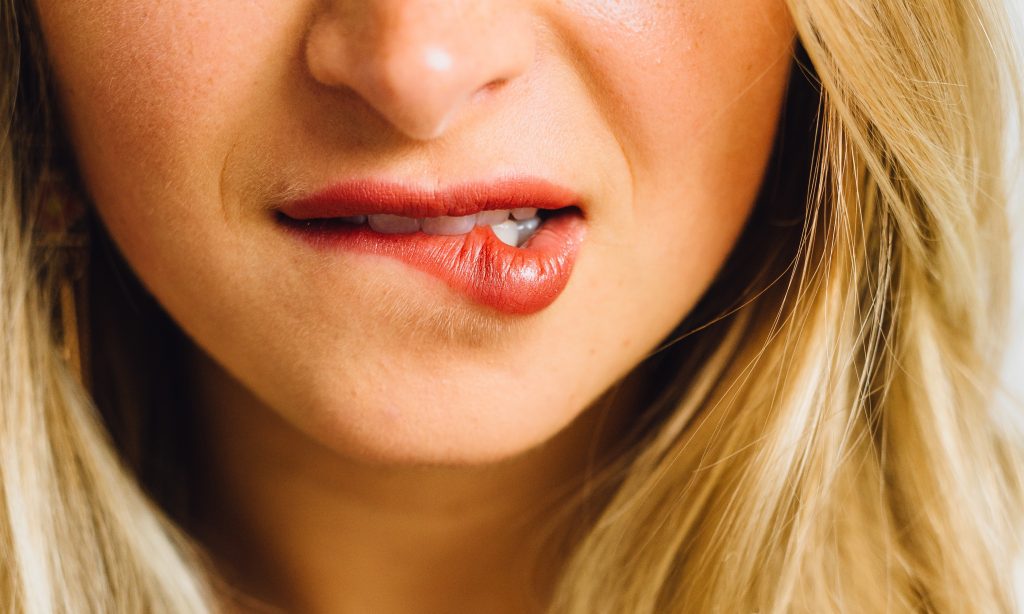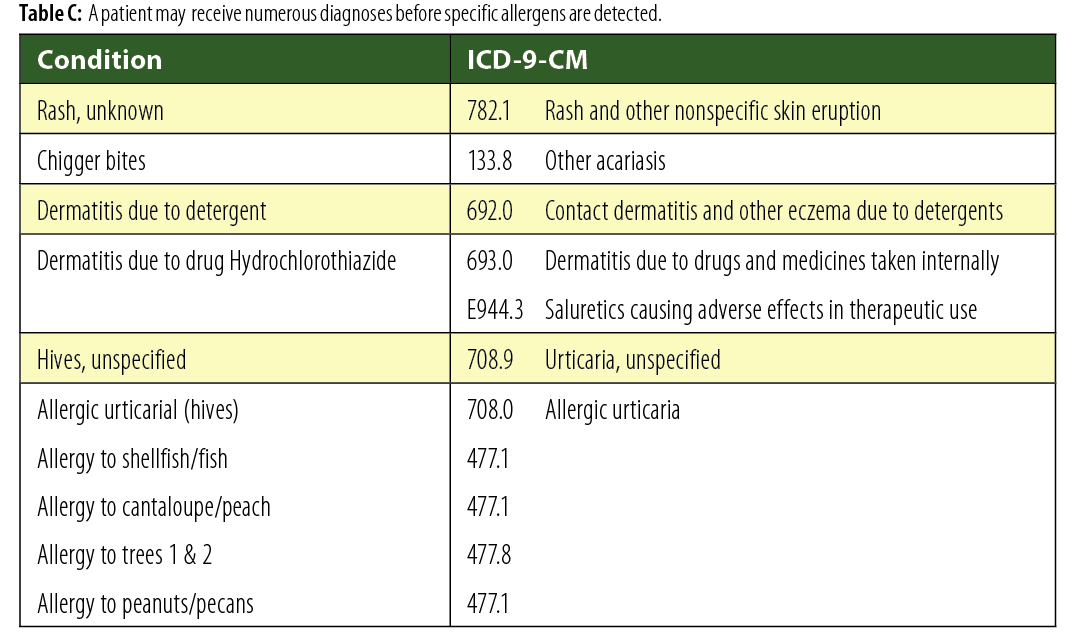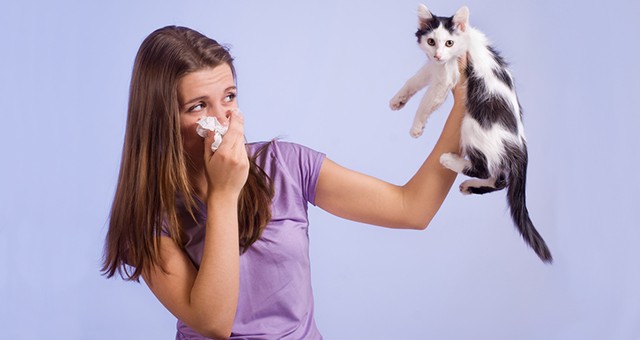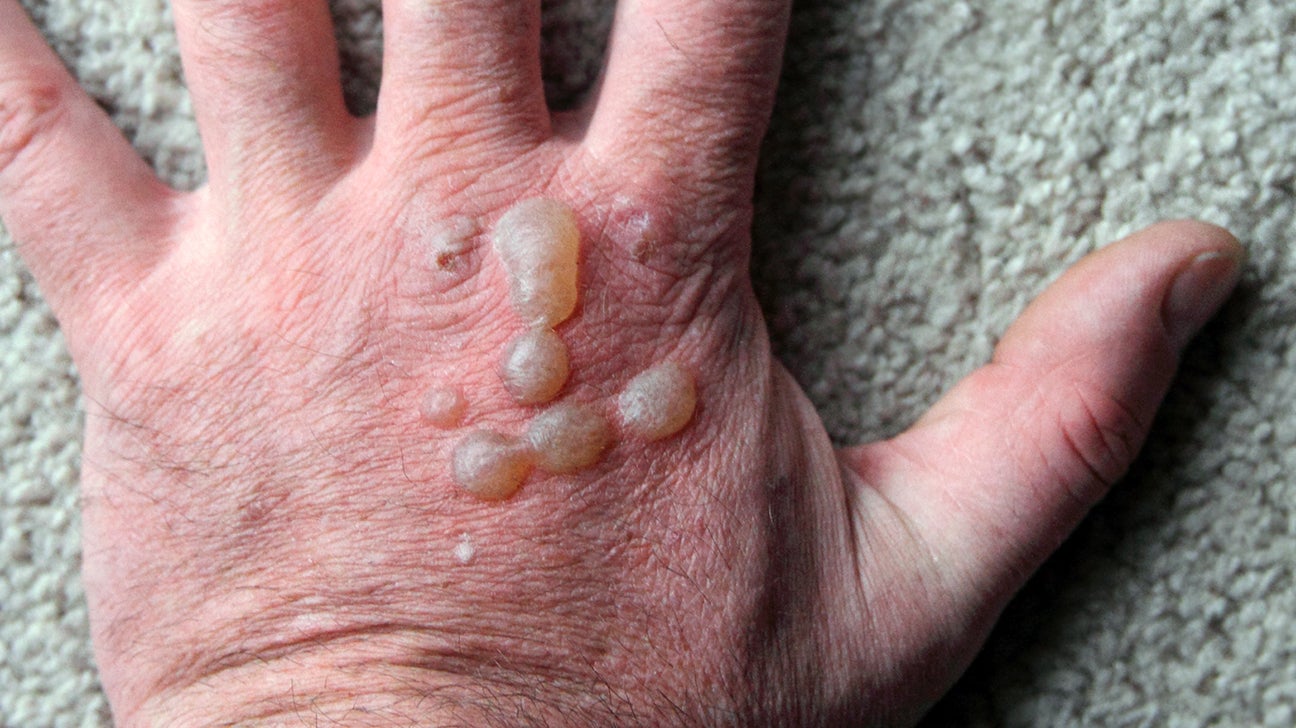The following are the most commonly seen clinical manifestations of an allergy of the lip. Lip Allergy Symptoms.

Why Do I Have Swollen Lips Is It An Allergic Reaction
Tingling sensation in both lips.

Allergic reaction on lips. Unfortunately all natural does not mean that a product is free from fragrances that can cause allergic reactions. Allergic contact cheilitis is allergic contact dermatitis affecting the lips. Allergic swelling of the lip is also known as allergic angioedema.
It is due to a type IV hypersensitivity reaction following contact with an allergen and usually presents as an eczema -like inflammation of the outer lip or vermilion margin. This is a kind of swollen lips allergy which normally start once you consume anything you are allergic to. Itching of the lips.
Anaphylaxis is a severe allergic reaction that can cause swollen lips. This term includes swelling of other parts of the body too. An allergic reaction on the lips may be caused by one of several things including a food allergy a pollen allergy or an allergy or sensitivity to lip balms or cosmetics.
Food allergies such as peanut or shellfish allergy result in burning itching or swelling of the lips. Be patient since your lips may take anything between two to four weeks to heal fully. Indeed many allergies which trigger bee-stung lips abound.
Food allergies can lead to wheezing stomach pain dizziness facial swelling Tongue swelling etc. Swelling of both the lips. Swollen irritated and itchy lips may indicate that something that a person is eating drinking or applying onto or around the mouth is triggering a reaction.
However chemicals in sunscreen acne medication and toothpaste can also adversely affect delicate lip skin 3. You may be wondering why an allergic reaction on the lips occurs when you eat or get exposed to certain things. Medical conditions such as rosacea irritated lip rash lips eczema allergic reaction red spot or infection can be embarrassing.
Lip swelling is one of the symptoms of swollen lips allergy food. You can bring out your best smile when following our treatment steps. A study by Tran et al 2010 compared 4 patients with an allergic reaction redness and swelling to lip balm.
Allergic contact cheilitis ACC is allergic contact dermatitis ACD that affects the lips. It is due to the release of histamine in response to an allergic trigger. Allergic contact occurs when certain allergens linger on the lips 1.
There are many types of allergic reactions that one can have when eating a food and the symptoms are more than just swelling of the lips. ACC causes the lips to look inflamed and swollen and may cause patches of scaly skin to appear on the. It is a condition where the lips swell up and become extremely puffy.
It is because your lips produce histamine a chemical which causes sneezing and itchy and inflamed skin. These substances which are mostly chemical ingredients in lip care products cause lips to swell crack and chap. An allergic reaction to lipstick can cause the lips to react.
Any type of allergy can cause anaphylaxis and it can happen within minutes or more than half an hour after encountering an. Vesicular eruptions on the. Did you know that many allergies abound.
Serious allergic reactions can be in the form an acute allergic reaction called anaphylaxis. An allergic reaction is characterized with other symptoms that includes sneezing runny nose swollen lymph nodes nausea and hives. The other type is allergic contact dermatitis ACD.
Allergic Reaction On Lips How To Treat July 29 2021 masuzi Swollen lips causes treatment and more swollen lips causes and treatment this woman had an intense allergic reaction to a teeth whitening treatment what you need know self 10 signs your ling lips mean trouble chapped treatments. Angioedema is severe swelling of the deeper tissues of the skin especially in the face and lips. Itchy and swollen lips commonly results from an allergic reaction from various allergens found in the lip care products oral care products food pollen grain and medication.
This is a condition which can lead to. The study showed that peppermint oil was the most likely cause of the contact dermatitis. Its symptoms include chest tightness.
This occurs within minutes to hours after exposure to a food. Swollen lips are also known as lip angioedema. This causes fluid to leak into the deep layers of skin in your lips which leads to swelling.
An EpiPen is the first course of action if swollen lips are caused by anaphylaxis. The biggest danger is a phenomenon called angiodemaAngioedema is a rapid swelling of the lips caused by a reaction to medication and can a true emerg. One of the most dangerous allergic reactions is anaphylaxis.
With ACD the reaction classically takes 48 hours to occur although it can occur less than a day following exposure or as.
Occasionally small skin reactions following an insect bite persist for weeks or months. The code S60562S is valid during the fiscal year 2021 from October 01 2020 through September 30 2021 for the submission of HIPAA-covered transactions.

Five Common Summer Ailments Be Ready With The Icd 10 Codes
ICD-10 Code for Urticaria unspecified.

Icd 10 code for allergic reaction to insect bite. Toxic effect of venomous bite or sting insects ICD-10-CM T63481A is grouped within Diagnostic Related Groups MS-DRG v 380. Non-specific codes like S60361 require more digits to indicate the appropriate level of specificity. Urticaria and erythema L49-L54 Details.
S60562S is a billable diagnosis code used to specify a medical diagnosis of insect bite nonvenomous of left hand sequela. 918 Poisoning and toxic effects of drugs without mcc. The ICD-10-CM code Z91038 might also be used to specify conditions or terms like allergy to.
2018 ICD-10-CM Diagnosis Code S60562A. Insect bite nonvenomous of l bk wl of thorax sequela. ICD-10-CM Diagnosis Code H65412.
ICD-10-CM Diagnosis Code S00562A. 2021 ICD-10-CM Diagnosis Code Z91038 Other insect allergy status 2016 2017 2018 2019 2020 2021 BillableSpecific Code POA Exempt Z91038 is a billablespecific ICD-10-CM code that can be used to indicate a diagnosis for reimbursement purposes. New code first year of non-draft ICD-10-CM 2017 effective 1012016.
ICD-10-CM Diagnosis Code S00562A convert to ICD-9-CM Insect bite nonvenomous of oral cavity initial encounter. Consider using any of the following ICD-10 codes with a higher level of specificity when coding for insect bite nonvenomous of right thumb. W57 - stinging poisonous insects.
Insect bite nonvenomous of right middle finger init. ICD-10-CM Diagnosis Code S20462S. Insect bite nonvenomous of left back wall of thorax sequela.
Nonvenomous insect bite of mouth with infection. 917 Poisoning and toxic effects of drugs with mcc. Urticaria and erythema L49-L54 Details.
Allergic reaction caused by insect bite - ICD-10 Code for Solar urticaria. Insect bites not stings rarely cause serious allergic reactions but can cause small itchy lumps to appear on the skin. Nonvenomous insect bite of mouth.
Insect bite nonvenomous of scalp. BILLABLE CODE - Use S60460A for initial encounter BILLABLE CODE - Use S60460D for subsequent encounter BILLABLE CODE -. ICD 10 Insect Bite Allergy Code According to the International Classification of Diseases the effects of arthropod attacks are grouped into the following groups.
The code Z91038 is valid during the fiscal year 2021 from October 01 2020 through September 30 2021 for the submission of HIPAA-covered transactions. Allergic contact dermatitis L23- angioneurotic edema T783 giant urticaria T783 hereditary angio-edema D841 Quinckes edema T783 serum urticaria T806- solar urticaria L563. Nonvenomous insect bite of tongue with infection.
ICD-10-CM Diagnosis Code S20462S convert to ICD-9-CM Insect bite nonvenomous of left back wall of thorax sequela. Thrombocytopenic hemorrhagic purpura D693. Convert T63481A to ICD-9-CM.
The ICD code W57 is used to code Insect bites and stings Insect bites and stings occur when an insect is agitated and seeks to defend itself through its natural defense mechanisms or when an insect seeks to feed off the bitten person. Nonvenomous insect bite of tongue. BILLABLE CODE - Use S60361A for initial encounter BILLABLE CODE - Use S60361D for subsequent encounter.
Z91030 Bee allergy status Z91038 Other insect allergy status With the expansion of the ICD-10CM codes for bee venom patients as well as changes to the terminology of the codes a clear understanding of the terminology is necessary to make the appropriate selection for the patients encounter. Allergic contact dermatitis L23-. Consider using any of the following ICD-10 codes with a higher level of specificity when coding for insect bite nonvenomous of right index finger.
Urticaria unspecified L50 Excludes1. The ICD-10-CM code S30863S might also be used to specify conditions or terms like infected insect bite of genitalia insect bite of genitalia insect bite of genitalia insect bite nonvenomous of scrotum and testis insect bite nonvenomous of scrotum andor testis infected nonvenomous insect bite of perineum with infection etc. Nonvenomous insect bite of right middle finger with infection ICD-10-CM Diagnosis Code S60462A.
Nonvenomous insect bite of right middle finger. ICD-10 Code for Urticaria unspecified Block. Z91038 is a billable diagnosis code used to specify a medical diagnosis of other insect allergy status.
Can be very large without being an allergy. Hives are one of the bodys responses to an allergic or inflammatory reaction.

Baby Skin Allergies Reasons Signs Treatment
Food allergies are the leading cause of hives in babies 6.
Allergic hives baby. About 20 of babies will outgrow a peanut allergy by age 5. Some babies develop hives just from coming into contact with certain foods for example when the juice from a strawberry gets on their skin. This is a reaction to the bees venom.
That causes blood vessels under the skin to leak creating those telltale red bumps. Medications often responsible for producing hives include penicillin sulfa drugs aspirin and ibuprofen. Hives are caused by allergic.
Generally they disappear in a couple of days and there is nothing to panic about but sometimes hives might indicate that your baby is about to have a severe allergic reaction. Infants who are exclusively breastfed could have allergies if the mother consumes an allergenic food 8. Pregnant women can face more serious bouts of itchiness hives or rashes and 1 in 150 pregnant women will develop a more serious skin condition known as PUPP.
Theyre usually very itchy. Influenza flu vaccine. Its prevalence is highest among babies up to the age of three years 14.
The tricky thing is that there are a lot of irritants that can trigger baby hives. Shampoos soaps detergents and similar products are. Symptoms of food and medicine allergies in babies include.
Hives are caused by an allergic reaction. Food allergies typically develop between 6 months and 1 year though some toddlers develop a peanut allergy between 1 and 3 years. Local hives are a reaction to the insects saliva.
Your baby may also develop hives a rash or itchy bumps if their skin is exposed to an allergen or something to which they are sensitive. Blood in their stool. The symptoms then quickly spread.
The released and accumulated fluid forms puddles. It is a type of eczema that is triggered by skin contact with an allergen. Wheezing or shortness of breath.
Histamine is released by the mast cells in the bloodstream and when it gets accumulated under the skin it starts leaking from the blood vessels. Always talk to your doctor first because many allergy medicines arent made for children under 2 years old. Allergic reactions are common in babies and may occur as a result of irritants bug bites certain foods or underlying skin conditions.
The symptoms also respond quickly to antihistamines Zyrtec or epinephrine. As soon as a baby comes in contact with an allergen the body reacts immediately by releasing histamine. While hives are often the result of an allergic reaction both viral infections and bacterial infections can also cause baby hives.
Rash including on their belly hives. Seek medical attention immediately if. Allergic responses tend to appear quickly usually within minutes.
If your babys hives are accompanied by a fever diarrhea andor a little baby cold then theres a good chance your child has a viral or bacterial infection. Other rashes in infants may appear similar to hives. The home remedies are not working.
Closely monitor your baby for signs of a severe allergic reaction. How Does an Allergy Trigger Hives in Infants. Allergies can cause various rashes including eczema hives.
What Causes Hives During Pregnancy. Hives generally appear if your child has come into contact with an allergen an infection a bug bite or a bee. Swelling of the tongue andor lips.
Experts state that foods such as nuts including peanuts fish shellfish and eggs are most likely to cause hives induced by an allergic reaction 7. After all a mild to moderate reaction could quickly turn severe. Allergic reactions typically start around a babys mouth where food touched their skin.
Some babies get hives around their mouth from drooling a new food. A baby may break out in hives because hes allergic to the food or to a chemical additive in the food. If your doctor recommends it give your baby a childrens antihistamine like childrens Zyrtec.
Peanut allergies along with tree nut allergies are much more persistent than dairy and egg allergies. In addition eye and ear drops laxatives or any other non-prescription item can cause hives. If your baby displayed skin hives as the only allergic reaction to eggs then he can safely have an influenza vaccine.
When mast cells sense something irritating they release the chemical histamine. The latest advancements in vaccine making process have ensured a minimal use of egg. Allergic contact dermatitis was earlier uncommon in babies but there has been an increase in cases due to increased exposure to allergens at a young age 15.
As your belly grows to keep up with your growing baby skin discomfort in the form of itchiness and dryness can occur. Can be very large without being an allergy. Some of the symptoms of environmental andor seasonal allergies in babies include.
Allergies to flea and other insects This kind of allergy is the most likely cause of a cat allergic reaction. Cats produce another major allergen Fel d 1 in the sebaceous glands of the skin and in their saliva.

How Do I Know If I Have Cat Allergies Poc
So does breast-feeding of infants.

Allergic reaction to cat saliva. These allergens are found on the fur and skin and in saliva. More than 90 percent of people allergic to cats have a sensitivity to a protein known as Fel d1 which is found in cat saliva feces and urine. In addition to nasal symptoms some people also may show signs of allergic contact dermatitis an immune system reaction that causes skin inflammation redness and irritation.
A cat allergy can contribute to constant allergy symptoms as exposure can occur at work school day care or in other indoor environments even if a cat is not present. When an allergic person comes into contact with cat saliva or dander the immune system reacts to protect the body by. When people with cat allergies are exposed to Fel d1 their immune system creates Y-shaped proteins called antibodies.
People with cat allergies react to specific substances that cats produce such as saliva skin flakes called dander or urine. People with cat allergies can be sensitive to proteins found in a cats dander. There are seven known cat allergens.
The major cat allergen is a protein called âœFel d 1â that is secreted primarily in the catâs saliva and skin and. Fel d 1 is deposited on the fur from sebaceous gland secretions and through saliva when cats lick themselves clean Mar 4 2007 4. Those who experience an allergic reaction to cats and pets have an over-sensitive immune system thats reacting to proteins found in pet urine saliva or dead skin cells known as pet dander.
Cat allergen is very small so it remains suspended in the air longer. There are multiple ways someone can come into contact with irritating pet allergens the substances that lead to. It is in fact a reaction to a protein found in feline saliva and oil glands in the skin.
Remember this basic fact about cat allergens. A cats saliva with the protein in it gets transferred onto their skin and coats. They are shed in saliva skin secretions and to some extent in urine.
Cats are fastidious groomersthey lick themselves all the time Paolillo says. Most people with cat allergies have an allergic reaction to a protein that is found in a cats saliva called Fel d 1. Its found in higher levels on male cats and is transferred to a cats fur during.
Avoidance of the allergen is the best treatment mode for any type of allergy. The Ohio State University College of Veterinary Medicine notes that most allergies stem from this protein which is passed on to the cats fur when the cat cleans herself. What Are Cat Allergens.
The commonest symptoms of cat allergy in humans are itching and burning in eyes sneezing itching and red rash on skin breathlessness tickling in throat etc. Hypoallergenic breeds are less likely to start in an allergic reaction as they produce fewer allergens than other cats. But most of the time cat allergies are triggered by a protein found in a cats saliva.
The cat allergen that over 90 percent of people with cat allergies react to comes from cat saliva and skin. Most often the allergic substance found is cats dander dead skin urine and the saliva. Because this protein is found in a cats saliva it can then cause an allergic reaction after they groom themselves groom other cats or spread allergens on rugs carpets or upholstered furniture.
Recent studies indicate that childhood exposure to cats may actually reduce the risk of allergic disease such as asthma. People with allergy to cats are particularly affected by cats dander or the protein Fel d 1 present in cat saliva. Cat Allergies and Hives.
Cats produce multiple allergens proteins that can cause allergy. Completely non-allergenic cats are tough to find low allergy or hypoallergenic cats are not. This protein gets transferred from the saliva to the dander and fur particularly around the cats face and neck.
Hives are red raised areas of skin that can cause itching and are usually the result of an allergic reaction. Some people after gardening or being exposed to some plants can develop small and itchy bumps on their arms.

Itchy Bumps Filled With Clear Liquid Causes And Treatment
Poison ivy poison oak or poison sumac.

Allergic reaction blisters on arms. Not everyone is allergic to these plants but those who are may even get. Measles is a viral respiratory infection that causes a widespread rash consisting of itchy red bumps. A number of cases of very allergic contact dermatitis resulting in facial swelling and blistering of exposed parts are seen every year due to Rhus trees Toxicodendron succedaneum which are specimen trees with lovely autumn colours.
Primula obconica and chrysanthemum can also cause allergic rashes. Some common reasons water blisters occur are. Allergic eczema is a skin condition that is caused or worsened by allergens and can produce blisters.
But its cause is. Burns from heat chemicals or the sun. The two types of reactions to an adhesive allergy are irritant contact dermatitis and allergic contact dermatitis.
This is called allergic contact dermatitis. The toxin found in poison ivy oak and sumac causes an. Another type of eczema dyshidrotic eczema also results in blistering.
They have similar but slightly different symptoms. Hives develop on the forearm due to an allergic reaction to some specific food or a dusty environment. This allergic reaction causes skin irritation and reddish-pink bumps or blisters that typically appear within 23 days of the skin touching the allergen.
According to FARE its possible to have a second wave of food allergy symptoms which may occur up to four hours after the initial reaction though this is rare. An interface dermatitis Id reaction is an itchy rash with small fluid-filled blisters that develop in response to a primary infection usually fungal. Chickenpox is a virus characterized by red itchy blisters that form all over the body.
It most often occurs on the sides of fingers but can also be found on the chest or arms. This type of rash onset occurs soon after taking medicine. These can be caused by the skin being allergic to chemicals secreted by plants.
Poison ivy oak and sumac. A medication reaction often starts on the trunk and may spread to the arms legs palms soles and the mouth.